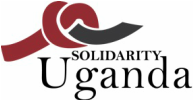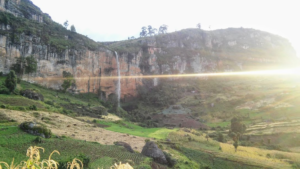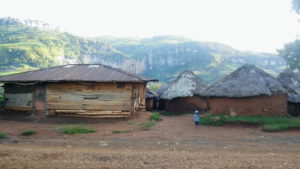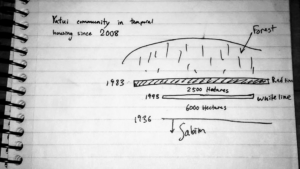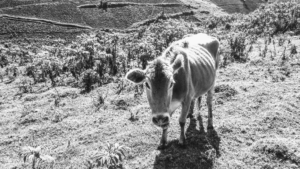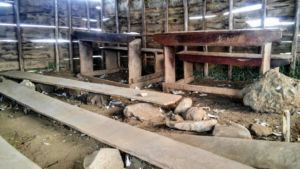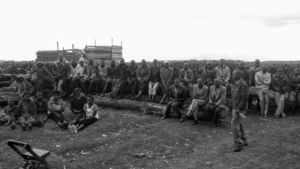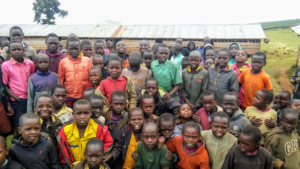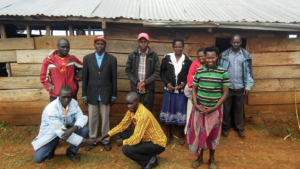By Shua Wilmot
The Benet people of Eastern Uganda were driven out of their motherland 35 years ago. The government has made very little effort to support them through their forced transition. One Benet community has been “settled” on temporal land for over 10 years, under constant threat of eviction at a moment’s notice. Since writing this article, seven Benet men have been gunned down while advocating for their grazing rights.
“All people should listen and take it as a serious issue.”
-Jacqueline Mangusho, Yatui Community member
Equipped with a small camera and a notebook, I traveled to the districts inhabited by the Benet tribe. The Benet Lobby Group welcomed me warmly. For several decades the BLG has advocated for its peoples’ rights to land and social services. BLG members Isaac Chelimo and Gilbert Kibet gave me a brief history lesson on the trials faced by the Benet. My host, Kiptala Moses, later supplemented the lesson with further details.
1936: Without much regard for existing tribal boundaries, British colonials draw a line at the foothills of Mount Elgon. They declare the region above the line Benet territory and the area below the line to be the territory of the larger Sabim tribe.
1968: Six years after gaining independence, Ugandan parliament ratified the 1936 Line.
1983: Ugandan government wishes to make the moorlands of Mount Elgon a national park. Without consent from—or even consultation with—indigenous Benet elders, it reduces Benet territory to the “6000 hectares” of land immediately above the 1936 line. All Benet people living in the moorlands are deemed encroachers on their own land and are evicted to the area between the 1936 Line and the Red Line drawn below the base of the forest.
1993: Ten years after designating 6000 hectares of territory to the Benet, the government uses actual measurement tools and finds it had actually bestowed the Benet with 8500 hectares. It further reduces the Benet territory by 2500 hectares, forbidding the building of permanent structures anywhere above the newly designated White Line.
2007: The Yatui Community, one of Benet’s four communities, has continued to live in the moorlands above the Red Line. Uganda Wildlife Authority (UWA) officials have attacked the community, burning down homes and even killing residents. In February 2007 the Yatui Community gathered to beat drums and scream from the mountaintop, “Our children are dying!” for eight continuous hours.
2008: Yatui’s cries are acknowledged. The community is given temporal land just above the Red Line. The Yatui are forced to migrate to this designated area and are told they will be granted a more permanent living arrangement after 6 months.
2018: Ten years later, the promise to the Yatui Community has not been kept. Their land of residence is still considered temporal, thus at risk of being taken from them at a moment’s notice.
Three Major Complaints
While I was graciously hosted by the Benet Lobby Group, they repeatedly informed me their complaints about their government’s actions fall into three major categories: issues of land, issues of grazing, and lack of social services. I spent the better part of a day meeting with various groups within the Yatui Community to learn the specifics of these complaints.
Issues of Land
The most obvious frustration for the Benet people is the loss of their native land. For hundreds of years the Benet lived in harmony with the earth of Mount Elgon. They harvested wild vegetables and herbs for medicines from the

Many Yatui community members hesitate to build homes larger than this one, knowing UWA rangers have been burning down permanent Benet structures for decades.
moorlands. Since the eviction of 1983, the Benet have been forced to become agrarian but have little access to receiving quality education on farming best-practices. Prior to the eviction, the Ugandan government promised to grant each displaced family 13-30 hectares of land. This is documented on official record. By 2008, some displaced families had received a single hectare, but most were given nothing.
The Yatui community has an added layer of challenge: the government resettled them on temporal land with the unmet promise of permanent land to come. Many Ugandans consider ownership of permanent land a vital means of raising school fees for their children’s education. Unfortunately, the Yatui see no clear future of permanent land ownership. Instead they live with the looming possibility that any land they till or homes they build may be taken from them as soon as they invest in developing them, because their temporal community is above the Red Line.
Issues of Grazing
Historically, the moorlands were literally a land of milk and honey. The Benet kept prolific apiaries in the flowering forests of Mount Elgon, and the cattle had an abundance of grazing territory. Elephants and buffalo also lived comfortably with the Benet (but they were entirely gone from the area by 1990 because there were no longer humans feeding them soda ash).
Today, cattle are not permitted to graze beyond the Red Line. It is important to note that, due to their diet and tendency to erode soil, cows need additional space for grazing that goes beyond land being used for crops. This is why issues of grazing are considered separate from issues of land. It also makes raising cattle (a reliable source of income) a huge challenge for the Benet, considering that their land size has been forcibly diminished over the past 35 years. Many cows wander past the Red Line simply out of necessity. Some UWA rangers will extort the optionless position of cattle farmers, charging them 10-20K Uganda shillings each month for every head of cattle that grazes above the Red Line. Other rangers will arrest cows (seriously!) that wander past the Red Line, and ransom them to their owners.
Lack of Social Services
A large number of the Benets’ complaints fall under the category of insufficient social services. The government has displaced the Benet people and made little effort to provide them with the necessary means to thrive. There are very few schools within the region, not a single hospital exists above the 1936 Line, and unemployment among the Benet is approximately 95%. It was only last year that the region received its first cell tower, which only provides service for one specific provider. Lobbying for these basic services is extremely trying because the Benet do not have any official political representation. Case and point, it took nearly a dozen years of petitioning before the government carved out a single road passing through the Benet territory.
The situation is even more dire for the Yatui community. They had no roads at all until just this past year when they took matters into their own hands and made a road themselves rather than waiting on the government. Their community has no school, and very limited access to the other schools in the region. Community members pooled resources to build a “temporal” structure (because permanent ones are not allowed above the White Line) where students are brought through their first five years of education. The “school” is not accredited, and even the teachers admitted it lacks quality educators. Furthermore, Yatui elders believe the limited water sources on the mountain will soon become insufficient for sustaining their growing population. There have even been a number of instances in which UWA rangers have beaten, shot, or raped women who have entered the moorlands to fetch water.
What the Benet Demand
The Benet know what they want, and they are preparing to demand it. With upcoming training in nonviolent civil resistance from Solidarity Uganda, the Benet will soon be equipped to strategically gain public attention and make their demands. Here is a summary of what they told me they wish to pursue:
Regarding land, they all want the land between the White and Red Lines to be returned to the Benet. Some want all the land on Mount Elgon returned, and most demand restitution for their destroyed homes as well. At the very least, the Yatui must be given permanent land so they may live without fear of eviction, and all Benet who were displaced during the eviction should receive property as compensation.
Even if the land above the Red Line is not returned to the Benet as property, the Benet cattle must be permitted to graze anywhere above the 1936 Line. This includes the moorlands above the Red Line, where they can access the natural salt licks in the caves. Along with this, there will need to be provisions for herders to build small, non-permanent structures for shelter above the Red Line. UWA workers in this region should be given stricter accountability for their conduct. (Yes, the Benet are not even demanding that UWA leave.) Additionally, a portion of Mount Elgon should be allotted to Benet beekeepers so they can fully restore their tradition of honey-making.
Many of the Benet are most concerned about the fundamental issues of land and grazing, and they believe that resolving those will put them in a more natural position to receive acceptable social services. Still, they are prepared to communicate their expectations for those services. They will need books, teachers, and accreditation for their school. They need government protection of their springs, at least one hospital in the Benet region, roads to access it, and a health center in the Yatui Community. And finally, they will require political representation… otherwise they will continue to use their people power to represent themselves.
For More Information…
If you are interested in learning more about the Benet, finding out how you can contribute to their mobilization, or reading any of the official documents associated with their struggle, please feel free to contact the Benet Lobby Group at thebenetlobbygroup@yahoo.com, or Kiptala Moses at KptalaMoses@gmail.com. You may also be interested in reading Anna Dirkse’s 2017 case study: https://scholarworks.uvm.edu/cgi/viewcontent.cgi?article=1018&context=rsmpp.
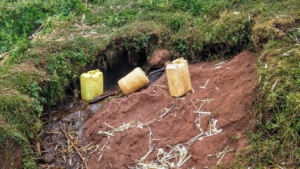
Several Yatui Community members insisted I share with you one of the springs from which they must slowly collect all their water for drinking, bathing, and washing.
